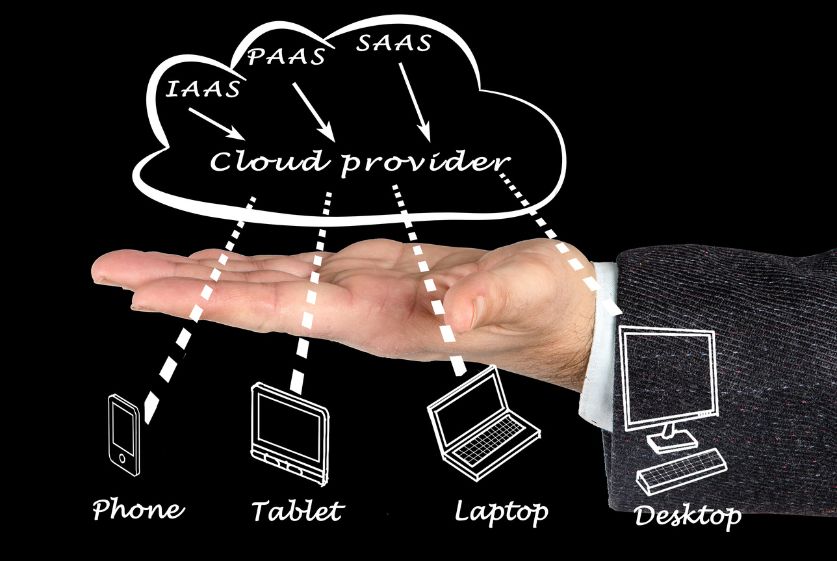Table of Contents
The rapid growth of cloud computing over the past decade has completely transformed how modern businesses operate. Instead of needing to maintain costly on-premises IT infrastructure and software, organizations can now access these services virtually through the cloud.
According to Gartner, the worldwide public cloud services market is forecast to grow over 15% to total $494.7 billion in 2022. As cloud adoption continues accelerating, it is revolutionizing business management in terms of capabilities, efficiency, costs, productivity, security, and more. Read more to know about How Cloud Computing is Changing Management.
Benefits of How Cloud Computing is Changing Management in Business
Cloud computing provides a multitude of benefits that directly impact key aspects of business management. The fundamental value propositions of the cloud include:
Cost Savings
Transitioning to the cloud eliminates large upfront capital expenditures needed for on-site data centers and servers. The pay-as-you-go pricing model allows usage-based payment for only the resources utilized. Without long-term commitments, businesses can flexibly scale back during slower periods to minimize costs. The shared responsibility model also reduces IT and support overhead for the organization.
Improved Collaboration
The cloud facilitates seamless collaboration across teams and locations through features like file sharing, real-time data access, conferencing tools, and centralized communication platforms.
Remote employees can securely access the same files and apps from any device. Managers have greater oversight through increased visibility and analytics.
Enhanced Agility and Efficiency
Cloud resources can be rapidly deployed in minutes or hours, compared to on-premises setups that can take weeks. The built-in flexibility and elastic scalability allow managers to quickly provision additional resources to meet spikes in demand. Automation further streamlines processes for improved operational efficiency.
Better Security
Leading cloud providers implement state-of-the-art security practices and protection not affordable to most organizations. Advanced capabilities include data encryption, visibility controls, role-based access, AI threat detection, and rapid remediation. Multi-factor authentication adds another layer of protection for sensitive data.
Cloud Computing Models Transforming Management
There are three main cloud computing models, each with distinct advantages that are modernizing business management today.

Infrastructure as a Service (IaaS)
The most basic category, IaaS provides access to fundamental computing resources including storage, networks, and virtual machines. This eliminates the need to purchase and maintain physical servers and data centers. The convenience of an on-demand pool of configurable infrastructure is invaluable for dynamic management needs.
Platform as a Service (PaaS)
PaaS delivers a managed software development and deployment environment in the cloud. Managers can build, run, and manage apps without setting up the underlying infrastructure.
The automated administrative tasks, load balancing, scaling, and integration allow rapid innovation and iteration of software capabilities to enhance operations.
Software as a Service (SaaS)
SaaS allows users to access cloud-hosted software applications over the internet, mainly via subscription models. Common examples include email, conferencing tools, CRM, marketing automation, HR systems, and more.
SaaS minimizes upfront costs while providing easy access from any device. The outsourced software reduces management burdens associated with licenses, maintenance, upgrades, etc. New features and fixes are instantly available.
Key Areas of Business Management Improved by Cloud
The agility, automation, and innovation of cloud computing have broadly enhanced major aspects of business management.
Data Management
The cloud offers practically unlimited, affordable data storage and analytics capabilities, with enterprise-grade reliability, backup, and recovery. Real-time dashboards and insights can be generated to optimize decisions. Managers have access to vital information anytime, from any location.

Resource Management
Cloud automation allows managers to quickly scale teams, infrastructure, and application resources up or down based on real-time demand. Usage-based costing improves cost allocation accuracy. Cloud analytics provides transparency into resource utilization for optimization.
Communication and Collaboration
Cloud-based productivity suites facilitate seamless content creation, communication, and collaboration across distributed teams. Shared cloud workspaces break down information silos while maintaining security. These tools provide managers with greater oversight for coordination.
Workflow Automation
Workflow automation tools help managers model, streamline, and improve business processes through the cloud. This minimizes manual tasks, enforces compliance, and increases overall team productivity by freeing them from mundane work.
Case Studies Demonstrating Cloud Benefits
Real-world examples from innovative companies highlight the transformative impact of cloud computing on business management.
Airbnb
The disruptive hospitality startup manages a massive global marketplace for short-term rentals and experiences. Airbnb relies on the scalability, reliability, and innovation of cloud technology to manage millions of customers, hosts, and transactions in 65,000+ cities.
Netflix
This leading media streaming platform leverages cloud infrastructure to encode, deliver, and stream high-quality video content to over 220 million subscribers worldwide. AWS enabled Netflix to quickly achieve global scale and availability with incredible cost efficiency.
Dropbox
Dropbox pioneered the consumer file-hosting industry and now serves over 600 million registered users globally. The cloud allowed Dropbox to scale rapidly to millions of customers at low costs while innovating features for file access, sharing, security, and collaboration.
Implementing a Successful Cloud Strategy
Transitioning to the cloud involves careful planning and execution to realize the full benefits while avoiding pitfalls. Here are the best practices for implementing a successful cloud strategy:

Assessing Business Requirements
First, managers should identify their overall goals, constraints, dependencies, and priorities for utilizing cloud computing. This includes determining acceptable risks, costs, resources, and timeframes to guide decisions.
Evaluating Cloud Providers
The next step is leveraging the assessment criteria to thoroughly evaluate and compare potential providers in terms of capabilities, reliability, security, costs, integrations, and other needs. Shortlisting top contenders and prototyping is recommended.
Migrating Applications and Data
After selecting a cloud provider, businesses should systematically plan the migration of existing systems and data. Prioritization, scheduling, testing, and backups should aim to minimize disruptions during cutovers to sustain operations.
Managing Ongoing Optimization
Regularly monitoring usage, automating processes, refining configurations, and identifying new opportunities for efficiency gains are imperative for optimizing cloud ROI over time. Cost and performance benchmarks should guide optimization.
The Future of Cloud-Enabled Management
Major technology trends point to an exciting future of cloud-driven innovation empowering business management transformation:
Expanding Artificial Intelligence and Machine Learning
Advanced Artificial Intelligence and Machine Learning capabilities deployed in the cloud will unlock more predictive insights, intelligent automation, and data-driven decision-making. This is a key priority for leading cloud providers.

Edge Computing Growth
Edge computing brings data processing closer to the source to reduce latency. It complements cloud benefits for use cases like IoT, AR/VR, autonomous vehicles, industrial automation, and more. Hybrid models will become more common.
Multi-Cloud Adoption
Using multiple public clouds allows businesses to reduce vendor lock-in risks and leverage diverse capabilities. It increases management complexity. Tools for simplified multi-cloud governance are emerging.
Quantum Computing Possibilities
Quantum computers have the potential to exponentially increase processing power by leveraging quantum mechanical phenomena. Major cloud providers already offer limited quantum computing access today to spark innovation.
Conclusion
The meteoric rise of cloud computing is disrupting how modern business management functions across the board. Transitioning operations to the cloud provides unmatched agility, accessibility, collaboration, and insights for managers to optimize nearly all aspects of their business.
While cloud adoption continues accelerating, edge computing, Artificial Intelligence/Machine Learning, multi-cloud, and quantum computing breakthroughs promise to unlock even greater transformation over the next decade.
Managers staying ahead of these cloud-driven trends will gain sustained competitive advantages through enhanced productivity, automation, innovation, and reduced costs.
FAQs
What are the main benefits of cloud computing for business management?
Some of the main benefits are cost savings, improved collaboration, increased agility and efficiency, and enhanced security. The cloud provides easier scalability, disaster recovery, and accessibility of data and applications.
How does SaaS improve business management?
SaaS delivers cloud-based software applications over the internet, reducing the need for costly on-premises software. It provides anytime, anywhere access to the latest tools while minimizing IT maintenance and support.
What cloud computing services are best for small businesses?
Small businesses often benefit most from IaaS for flexible infrastructure and PaaS for accelerated development. Leading providers include Amazon Web Services, Microsoft Azure, and Google Cloud Platform.
Is the cloud secure for sensitive business data?
Yes, leading cloud providers offer robust security including encryption, visibility controls, advanced threat protection, and AI-driven monitoring to safeguard sensitive data. Multi-factor authentication adds other layers of protection.
How can managers develop an effective cloud strategy?
Assessing business requirements, evaluating providers, migrating and integrating systems, optimizing usage, and monitoring ROI are key steps to develop an effective, long-term cloud strategy tailored to your management needs.









